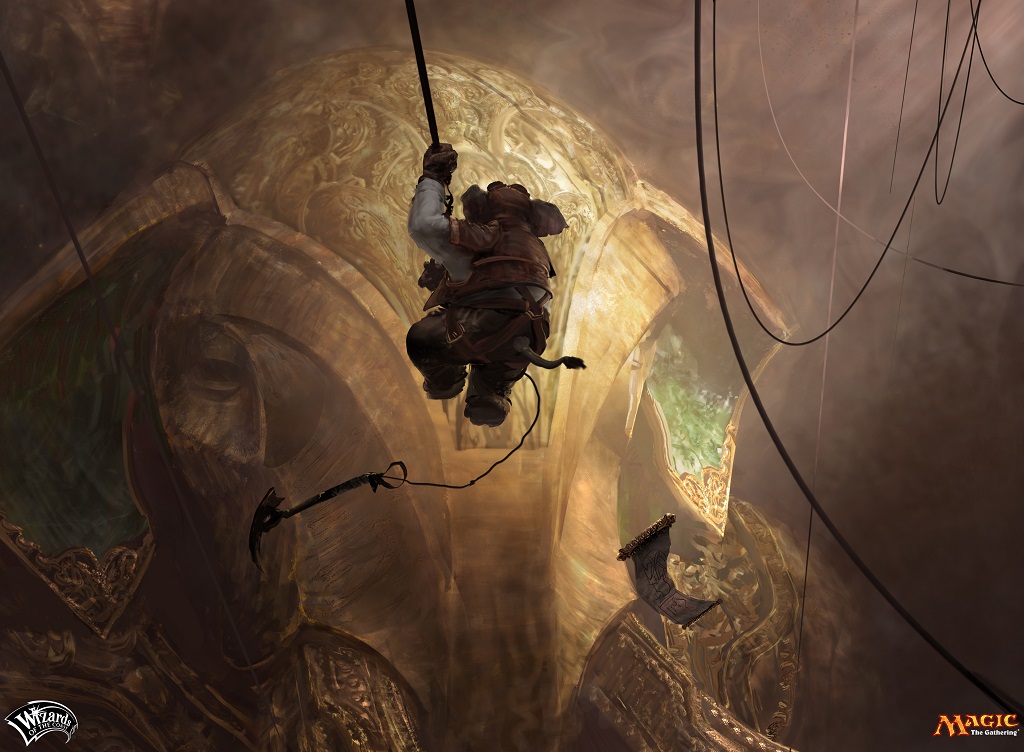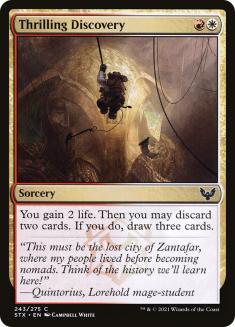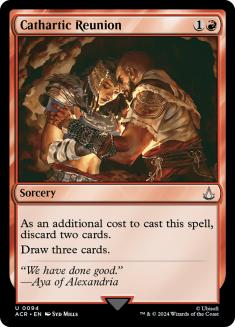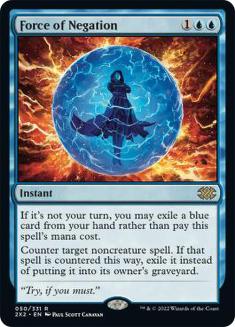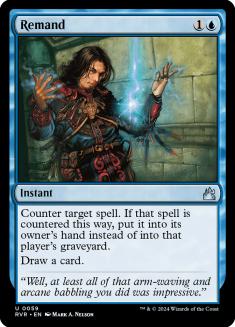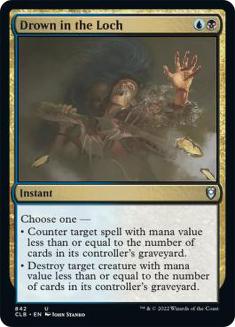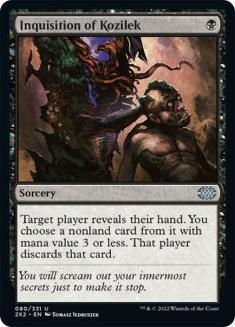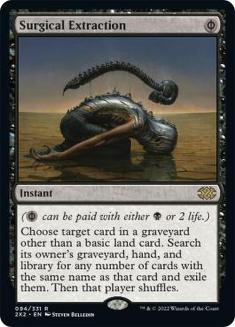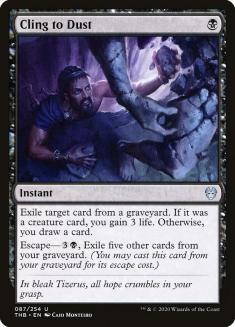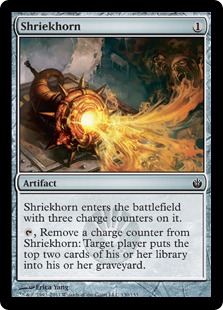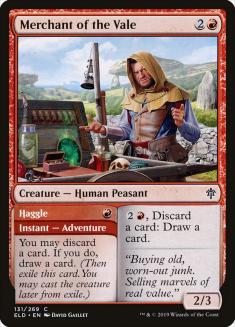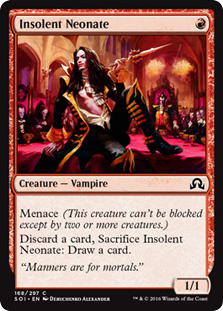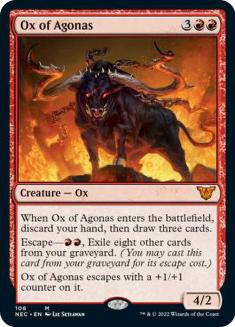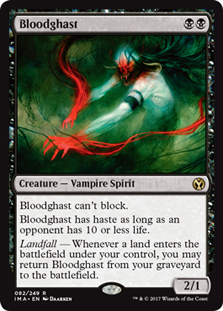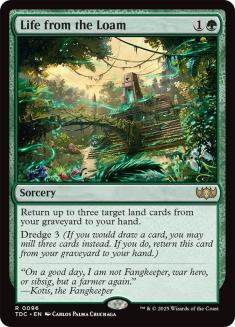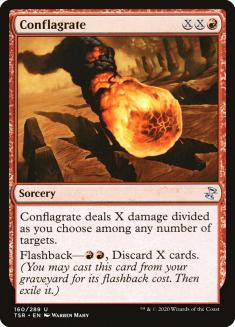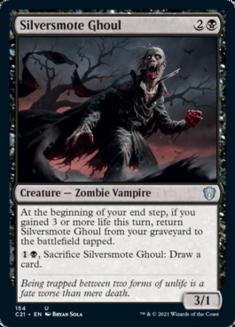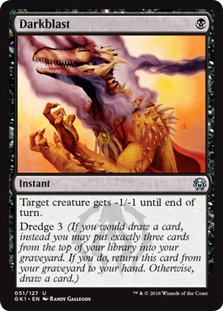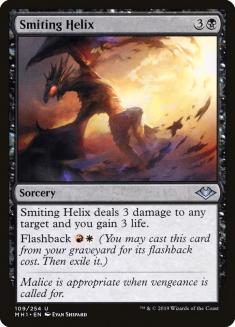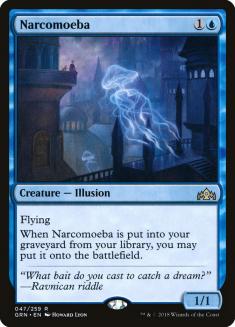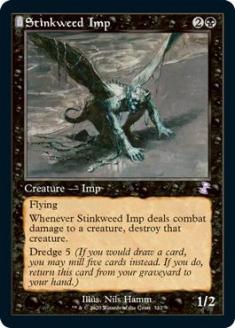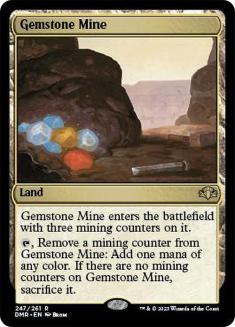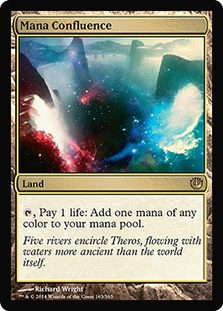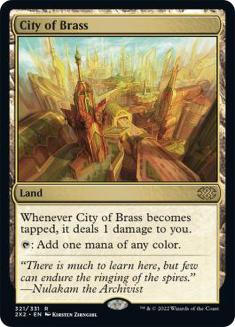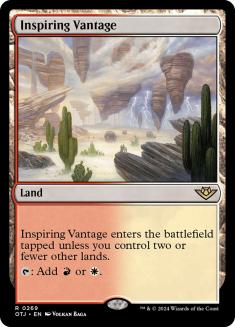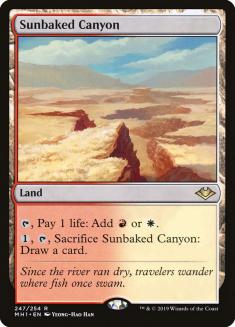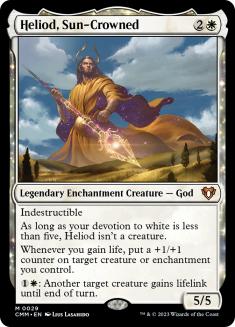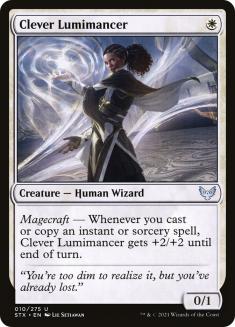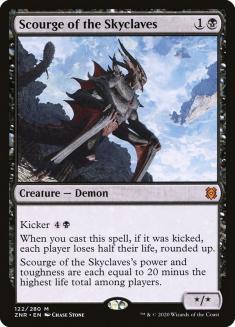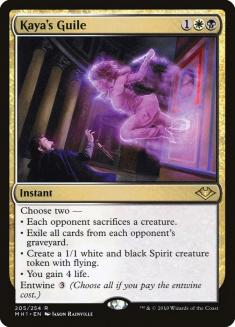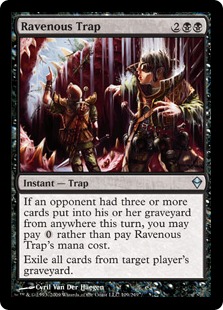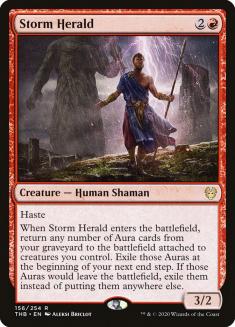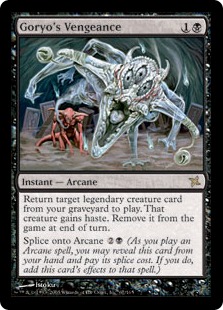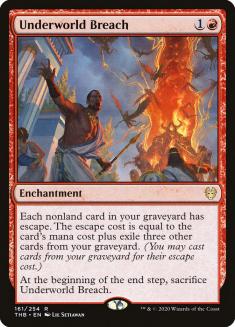Whoever named Thrilling Discovery has a healthy sense of irony. Anyone who wandered into a Modern event on Magic Online (MTGO) last weekend learned the hard way that Dredge is back in a big way:
Creatures (19)
Lands (19)
Spells (22)

Creatures (19)
Lands (19)
Spells (22)

The most important part is self-explanatory — Cathartic Reunion was the best enabler for Dredge and now you get to play eight of them. But this change has wider implications for the deck and its place in the format.
Dredge is one context where Cathartic Reunion making you discard as a cost could be a benefit — if you know your enabler isn’t resolving, being able to bin your dredger lets you start your engine anyway — but there are many more games where you need to attempt several enablers without throwing resources into the void. With Thrilling Discovery you have more draws with multiple premium enablers and a better chance of actually casting them (versus a multiple-Reunion draw where the first one failing can leave you short of casting the second).
Thrilling Discovery is also better against the increasingly popular Drown in the Loch, which is guaranteed to counter Cathartic Reunion but can miss Thrilling Discovery if it’s your first play of the game.
The math with the other broad category of disruption in Modern is even simpler: redundancy is good against discard. The decks hoping to disrupt you in this way are poor at beating Dredge on the battlefield and a decent portion of their equity in the matchup comes from sniping the one enabler (or, again, the one good enabler) with a Turn 1 discard spell. If you can minimize the chance of that, you’re fine.
The timing of additional costs also gives the opponent a window to hit your dredger with targeted graveyard hate before Cathartic Reunion resolves. Thrilling Discovery discards and draws in one motion — by the time they can cast their Cling to Dust, it has way too many good targets to be effective anymore.
As Ari explains in our first episode of Dominaria’s Judgment (available every week wherever you get your podcasts!), the effect of the London Mulligan on Dredge was more complicated than it seemed at first:
- Level 0: The London Mulligan helps Dredge as a linear deck that needs specific pieces to function.
- Level 1: Everyone knows this and will come prepared with hate — this new rule increases your odds of finding Leyline of the Void or Rest in Peace.
- Level 2: It’s now easier for Dredge to find a functional hand that also has an answer to hate.
This Level 2 response is much less certain in a world without Faithless Looting. A hand with just Shriekhorn or Merchant of the Vale as an enabler may be too slow to pose a threat after the initial hate versus anti-hate dance, even against a mulligan that had little going for it beyond that hate card.
Thrilling Discovery fixes that — two lands, an answer to hate, Thrilling Discovery, and a dredger is an excellent five-card hand — and also lets you dig for that answer if you need it. Looting is generally better than rummaging under those circumstances but Faithless Looting itself would put you down a card (which matters a lot in these low-resource games) and Discovery digs deeper. If you expect to cast one enabler in the game and you can’t cast it on Turn 1 anyway, Cathartic Reunion or Thrilling Discovery is what you want.
Dredge gets new toys every so often but their effectiveness is limited by how weak the enablers are. The deck’s major selling point used to be an unrivalled, in-built redundancy — you had enough good enablers and enough dredgers that you could rely on having at least one of each, and once that ball is rolling, the dredge mechanic lets you laugh at the usual ideas of card flow or card advantage. You almost feel sorry for people trying to piece together a combo with Serum Visions when you get to ‘draw’ a dozen cards at a time without breaking a sweat.
Losing Golgari Grave-Troll made one-shot enablers like Insolent Neonate and eventually Merchant of the Vale much weaker. Faithless Looting was the backbone of any deck that played it and Dredge was no exception. Shriekhorn is a promising enabler but often relies on a follow-up like Cathartic Reunion or Ox of Agonas to make your draw fast enough. This left Reunion as the one enabler that could reliably produce a strong draw (especially against other fast, linear decks), introducing the flaws that come with a dependency on any one card.
Thrilling Discovery doubling your access to your best card is a significant power and consistency boost in itself but also lets you lean into that effect harder — much as Gifts Storm came into its own with Baral, Chief of Compliance as another and better Goblin Electromancer or Dimir Mill (Lurrus) went from fringe player to consistent performer when Ruin Crab joined the cast. A good example is another card that was meant to exhume Dredge:
Ox of Agonas is clearly an incredible tool for Dredge but it mostly enhanced draws that were already firing on all cylinders. Thrilling Discovery sets up a game-winning Turn 3 Ox more consistently and that may be the scariest development of all.
This in turn might prompt a rethink of what we’re building towards.
This package has been a cornerstone of Dredge for years — partly because of a lack of other options, and partly because a list that lacks the raw speed of previous versions wants a way to unclog the battlefield (or win outside of combat) and establish inevitability. These cards set up (and almost require) each other. Life from the Loam gives you a land drop to return Bloodghasts and fuel for Conflagrate, which works with Creeping Chill to bring the opponent’s life total low enough to give Bloodghast haste.
If you’re missing any of these pieces, this engine takes a while to accomplish anything. Even with all the pieces, the limit on how soon you can recur Bloodghast delays this payoff. If a Turn 2 Cathartic Reunion mills Bloodghast, that Bloodghast can only enter the battlefield (and trigger Prized Amalgam) on Turn 3, setting up the first attack with Amalgam on Turn 4 if you didn’t hit Narcomoeba with Reunion.
With Thrilling Discovery letting us tear through our deck on Turn 2 more often, we can build the deck to be faster (if more one-dimensional).
Replacing Bloodghast with Silversmote Ghoul allows Creeping Chill to indirectly return Prized Amalgam as long as you can mill them all together, giving you a new and more attainable subset of ways to flood the battlefield quickly. Silversmote Ghoul also has incidental benefits over Bloodghast: a better body, the option to dredge again and at instant speed, and self-sacrifice as a foil to removal that would exile it.
Without Bloodghast and Conflagrate, there’s no reason to play Life from the Loam. Darkblast dredges for the same amount but singlehandedly invalidates small creature decks — mostly extinct already in the face of Lava Dart, but people play what they play and the most popular Lava Dart deck now has Clever Lumimancer, which is a big part of their best draws. When Darkblast does have targets, it can be the Turn 1 enabler that sets up a brutal Turn 2 Reunion or Discovery — otherwise, it can’t bin itself the way Life from the Loam can (‘Loam with no targets’ never feels good but is a useful option to have).
Notably, Darkblast excels against Selesnya Company, sometimes buying you a turn or the game by picking off Arbor Elf and later giving you insurance against the Heliod, Sun-Crowned combos with Spike Feeder or Walking Ballista (as Spike Feeder will be a 1/1 once the first counter is removed but before its ability — and then Heliod’s — resolves).
Smiting Helix and Conflagrate are very different cards but compete for the same slots once the others are accounted for. Helix was always an appealing card to pair with Silversmote Ghoul but the commitment to white was hard to justify before Thrilling Discovery.
Life from the Loam places new demands (while removing others) on a manabase stretched surprisingly thin:
Dredge is now effectively a Boros deck with an occasional interest in casting its off-colour cards — in particular, Stinkweed Imp is an essential part of stabilizing the battlefield in longer games against decks like Jund Death’s Shadow. The fetchland-shockland manabase can accommodate this fairly easily, but the need to cast Thrilling Discovery increases the downside of drawing the ‘free’ Steam Vents for Narcomoeba or the ‘free’ Blood Crypt for Stinkweed Imp without a white source, shutting off your key spell.
The rainbow lands are seen in small numbers even in manabases that need a full boat of fetchlands for Bloodghast and Life from the Loam — Gemstone Mine in particular gives Loam a crucial flexibility in letting it return an untapped, painless source of any colour in the mid-game. The winning ‘stock’ list from this Saturday’s Modern Challenge has sideboard cards across four colours and it’s hard to cast these all consistently without a Gemstone Mine or two making up the numbers.
With a more conservative manabase, there’s a strong case for some number of fastlands in a format where taking unnecessary damage is more costly than ever. In a twist the Lorehold would love, red and white alone can support the most graveyard-centric archetype of all time.
That manabase would have a lot of interest in Sunbaked Canyon despite the unavoidable damage as an untapped dual land that can be traded in to dredge again with no extra requirements. The classic, rainbow lists often have a Forgotten Cave to let Loam continue the dredge chain or protect that Loam from graveyard hate, but entering the battlefield tapped is a severe cost.
This new and improved version of Dredge is making its mark on Modern but the format is quickly adapting.
Selesnya Company was already the consensus best deck and most popular deck in competitive Modern, and that may do more than anything to limit the resurgence of Dredge. The infinite life combo is game over, the incidental lifegain stops Dredge from winning the race, and Auriok Champion is a maindeck combo piece that has a proven record in decks like Humans as a sideboard card against Dredge. Scavenging Ooze is available as an on-plan, widely useful card that takes over the game quickly, and nuclear options like Rest in Peace or Wheel of Sun and Moon can make things even worse if they decide to care.
The other big beneficiary from Strixhaven is easy prey for Dredge, which can present an equally fast clock while swinging that race with Creeping Chill and manage prowess threats with Conflagrate / Smiting Helix or Lightning Axe out of the sideboard. Boros Prowess needs heavy-duty graveyard hate to compete but has to find it quickly without any filtering.
Similarly, Dredge retains its structural advantage over the Death’s Shadow decks and the free lifegain from Creeping Chill embarrasses Scourge of the Skyclaves.
Kaya’s Guile was already a fixture of the format before Strixhaven, where the big winners are the graveyard combo deck and the burn-heavy aggro-combo deck. It’s no surprise that the default control deck (Esper Control) and the default midrange deck (Five-Colour Niv-Mizzet?!) in recent results both run a full set of this card and that won’t change anytime soon.
Dredge is no Azorius Eldrazi or Simic Urza. It can never be too outrageous as a best deck because the tools are there to contain it. It can still be a problem — as Hogaak reminded us last year, games that reduce to ‘did you draw Leyline of the Void?’ are not very interesting (or reassuring, when you do draw it and lose anyway) — but I think Dredge will return to its former role as an excellent deck that becomes the best deck as soon as people stop paying it enough respect.
This is nothing new. Almost fifteen years ago, players at Pro Tour Valencia prepared for a format in the middle of a zombie apocalypse thanks to the printing of Narcomoeba and Bridge from Below in Future Sight. The result looks bizarre if you don’t know the context — half of the Top 8 had Leyline of the Void (the Abzan Midrange player brought an additional five hard graveyard hate cards on top of their playset!) and many decks had a maindeck Tormod’s Crypt to pair with Tolaria West or Trinket Mage, but there’s barely a graveyard deck in sight among the Day Two decklists. This was still an unhealthy format even though the source of the illness was hardly visible.
A recurring frustration for me during Dredge’s heyday was that it boxed out other decks that relied on the graveyard. These decks usually lined up poorly against Dredge and had to slog through a sea of hate that wasn’t aimed at them at all. I salute the brave player who made Top 8 of Sunday’s Modern Challenge with Storm Herald Combo but it may be hard to emulate their success in the near future.
It’s time to sleeve up your graveyard hate and get ready to fend off the hordes. At least Leyline of the Void exists with a gorgeous old frame treatment now if you want to clown on them in style.

